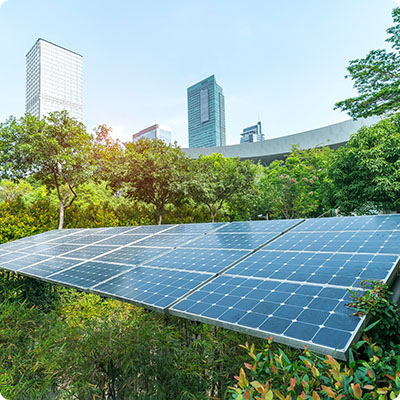Products and eating habits
In addition to dates, which are perfectly adapted to the scorching desert climate, traditional crops include cucumbers, squash, onions, lemons, pomegranates, melons and a few heat-resistant cereal varieties. The vast majority of foodstuffs, however, are imported. Goat, mutton, poultry (formerly wild birds, now chicken), fish and seafood were initially the most common sources of protein. The dromedary, which provided milk, hair for weaving, combustible dung and, above all, a means of transport, was little or never touched.
Islam plays a central role in Emirati daily life. The Koran is very strict about "haram", i.e. impure, foods such as pork and alcohol, although both can be found in specialized stores for non-Muslims and also in hotels. In addition, all meat consumed by locals must be "halal", i.e. authorized by Islam, after a proper slaughter.
The date of Ramadan or "fasting" depends on the lunar calendar and changes every year. During the month of Ramadan, all healthy Muslims are expected to fast from sunrise to sunset. They must also refrain from drinking. Only pregnant women, the sick and the elderly are not required to observe the fast. However, this policy is much more flexible with regard to tourists and non-Muslims, and it is possible to eat without any problem during the day, particularly in large international establishments.
The classics of Emirati cuisine
Although there is an abundance of international cuisine in the country, particularly from South Asia and the Middle East, there are a few typical UAE specialties, often also found in the rest of the Persian Gulf, that are well worth a visit.
During major celebrations, ghuzi or shuwaa, a whole lamb or pieces of lamb garnished with dried fruit, is cooked on a bed of rice. You can also try majboos or kebsa (chicken or lamb stewed with rice, onions, tomato and a host of spices) or saloona (a highly aromatic stew generally based on chicken with vegetables). Closely related, fareed or tharid is a long-simmered stew of lamb and potatoes. The more rustic harees is a kind of porridge made by slowly cooking meat mixed with wheat semolina until it becomes a nourishing paste, commonly served for Aid or Ramadan. A similar dish is madrouba, a rice porridge with chicken.
A variety of influences
Thanks to its strategic trading position and the oil boom that began in the United Arab Emirates in the 1970s, the country has attracted many foreign workers, bringing with them their own specialties, starting with Indians and Pakistanis. Biryanis (a mixture of fragrant rice, meat and dried fruit), tandooris (grilled marinated meat) and curries have become local dishes in their own right.
Lebanese cuisine is also very popular. For a quick bite, there's shawarma, a pita bread filled with grilled meat and raw vegetables. Mezze (appetizers) include falafel (chickpea dumplings), hummus (chickpea purée), baba ganoush (eggplant caviar) and Lebanese tabbouleh. You'll also find kebab (pieces of meat or fish grilled on a spit) or keftas (spicy minced lamb dumplings).
Iranian gastronomy is also very present, and honors saffron. Tahdig, a crispy rice dish, is a must, while khoresh is the Persian word for various types of stew, with eggplant, prunes or pomegranate juice. Finely spiced Iranian kekabs are delicious.
Desserts and drinks
The sweets found in the United Arab Emirates are similar to those found in the rest of the Middle East, with an undeniable Indian touch. For example, you can enjoy the very popular luqaimat, small round fritters soaked in warm date syrup and honey, reminiscent of Indian gulab jamun. Another classic - originally from Egypt but much appreciated in the country - umm ali is a French toast pudding with coconut and raisins. Batheeth are date paste and pistachio cookies. Khabee is a semolina purée cooked with water, sugar, saffron, cardamom and rosewater, often served during Aid. Finally, mehalabiya is a flan with rosewater and pistachios, known as mouhallabié in Lebanon, where it originated. Breakfast is served with khamir, a wafer swollen with black cumin seeds, while chibab is a spongy pancake flavored with cardamom.
These sweet treats are sometimes accompanied by Arabic coffee. It's the national drink, and Emiratis systematically offer it to their guests as a sign of respect and welcome. Always flavoured with a hint of spice (usually cinnamon or cardamom), Arabic coffee is served black and sugar-free, accompanied by a few dates to reduce its bitterness. It's usually best to drink three - small - cups. Tea, like coffee, occupies an important place in Emirati culture. It is therefore regularly consumed in the country. Chai karak, a black tea with milk, cardamom and saffron, is particularly popular.
Although normally forbidden to Muslims, alcohol consumption enjoys a certain degree of flexibility in the United Arab Emirates, particularly in the bars and restaurants of international hotels. Residents are required to have a permit to consume alcohol, but this does not apply to tourists. Otherwise, quench your thirst with tasty fruit juices. For a Lebanese touch, look for Barakat's Lime&Mint in the chilled section, a divine blend of lemon and mint, as prepared in Beirut. We also invite you to discover Zadina shooters of pure date juice.









